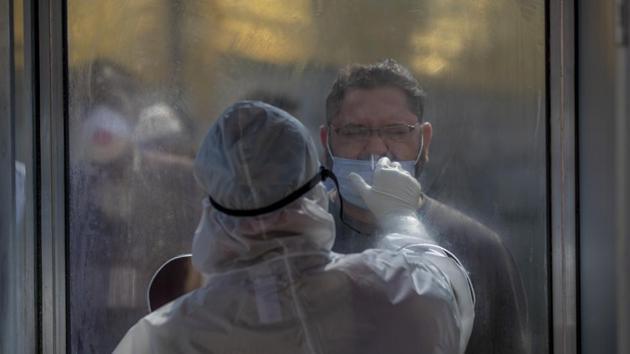Covid-19: What you need to know today
India’s positivity rate for the week ended October 13 was 6.2%, according to the health ministry. This is consistent with an infection rate of 12%.
Antibody tests administered to a huge swathe of the population (or sero surveys as they are called) have shown that a significant proportion of the Indian population has been exposed to the Sars-CoV-2 virus which causes the coronavirus disease.

How significant?
A previous instalment of this column, Dispatch 158 on September 15 attempted to address that question. The answer (based on results of sero surveys conducted across the country, and some conservative assumptions): 15% of the urban population and around 5% to 7.5% of the rural population can be expected to have been infected with the virus. Assuming a rural population of 850 million and an urban of 450 million, and taking the rural infection rate as 6.25%, the weighted infection rate for the country is around 12%. This is not a measure of those with current infections, but those who have been infected and cured (many times without their knowledge).
India’s positivity rate for the week ended October 13 was 6.2%, according to the health ministry. This is consistent with an infection rate of 12%. Both antigen and molecular tests for Covid-19 test for current infections, unlike the antibody tests which look for antibodies — they can only diagnose current infections where antibodies have been produced (one reason why they aren’t recommended for diagnosis) or previous exposure — and logic demands that the positivity rate always be lower than the infection (or exposure) rate.
Also Read: Researchers find evidence of antibody production 5-6 months after Covid-19 infection
There’s been a lot of talk of herd immunity (again) in recent days, especially with the release, last week, of the loftily named Great Barrington Declaration (https://gbdeclaration.org/) which basically calls for building herd immunity. “The most compassionate approach that balances the risks and benefits of reaching herd immunity is to allow those who are at minimal risk of death to live their lives normally to build up immunity to the virus through natural infection, while better protecting those who are at highest risk. We call this Focused Protection,” it says. A report in the New York Times suggests that the Trump White House has embraced this declaration.
Because it’s important to say this, I will do so straightaway: I do not agree with the course advocated by the declaration, and believe it is downright dangerous. Several experts believe that the only way to achieve herd immunity in the case of the coronavirus disease, without significant loss of lives, is vaccination.
The herd immunity level may be just around 40% instead of the widely believed 60%, according to mathematicians at the University of Stockholm and the University of Nottingham; and only around 11% of people exposed to an infected person are likely to contract Covid-19, according to a team led by Ramanan Laxminarayan of the Centre for Disease Dynamics, Economics & Policy. It still does not make sense to pursue an expose-and-infect strategy. That’s because some of those infected tend to be superspreaders (8% infect 60%, according to the second study cited above); we do not know enough about the long-term impact of even mild infections; and the mathematicians themselves, in the first study cited above, caveat that the 40% number is not even directional but merely to show how “population heterogeneity affects herd immunity”.
Click here for complete coverage of the Covid-19 pandemic
Still, sero surveys are important — not so much for assessing when a city or region or country is likely to achieve herd immunity, but to measure prevalence of the infection and the proportion of the population that has been exposed to it. A city or state with a high exposure rate (as measured by the sero survey), can safely assume that with stringent enforcement of mask discipline, social distancing, hand hygiene and rules on public gatherings, it can open up just about anything (including schools) with a lower risk than a city or a state with a lower exposure rate. That’s good enough reason for the Union government as well as states to get serious about sero surveys, just as it is good enough reason for them to get serious about the enforcement of Covid-safe behaviour.






